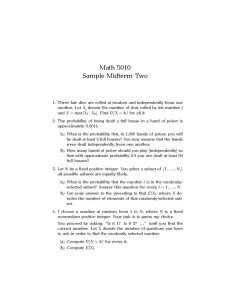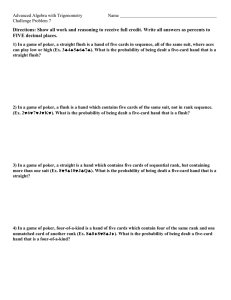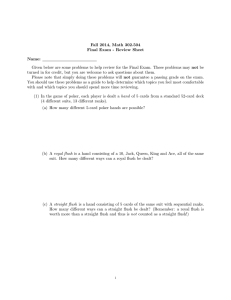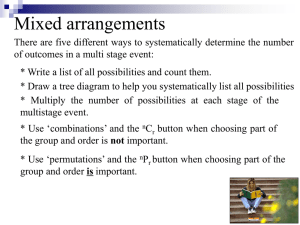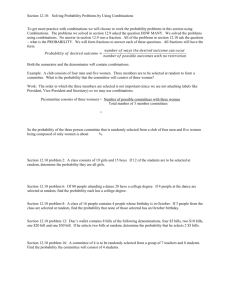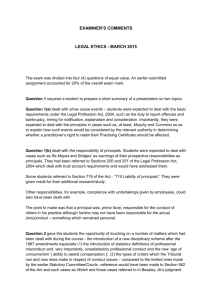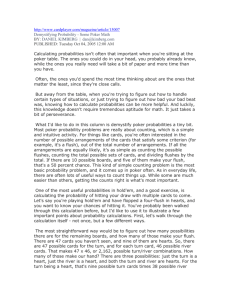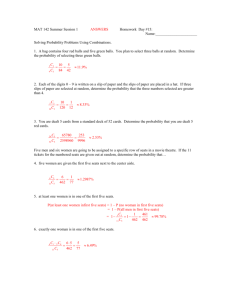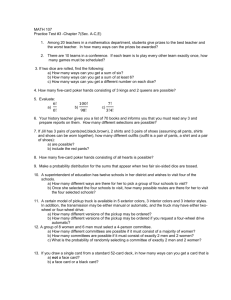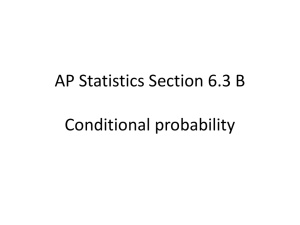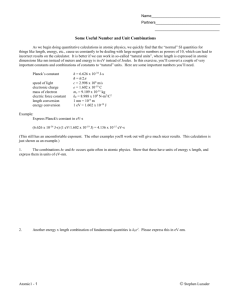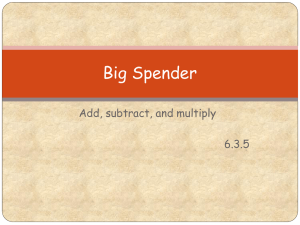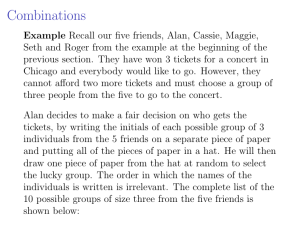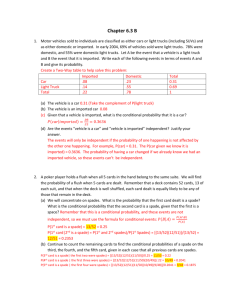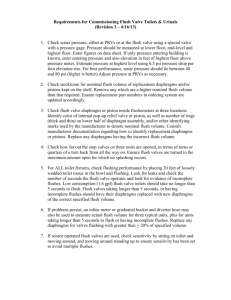Day 15 Class Notes
advertisement
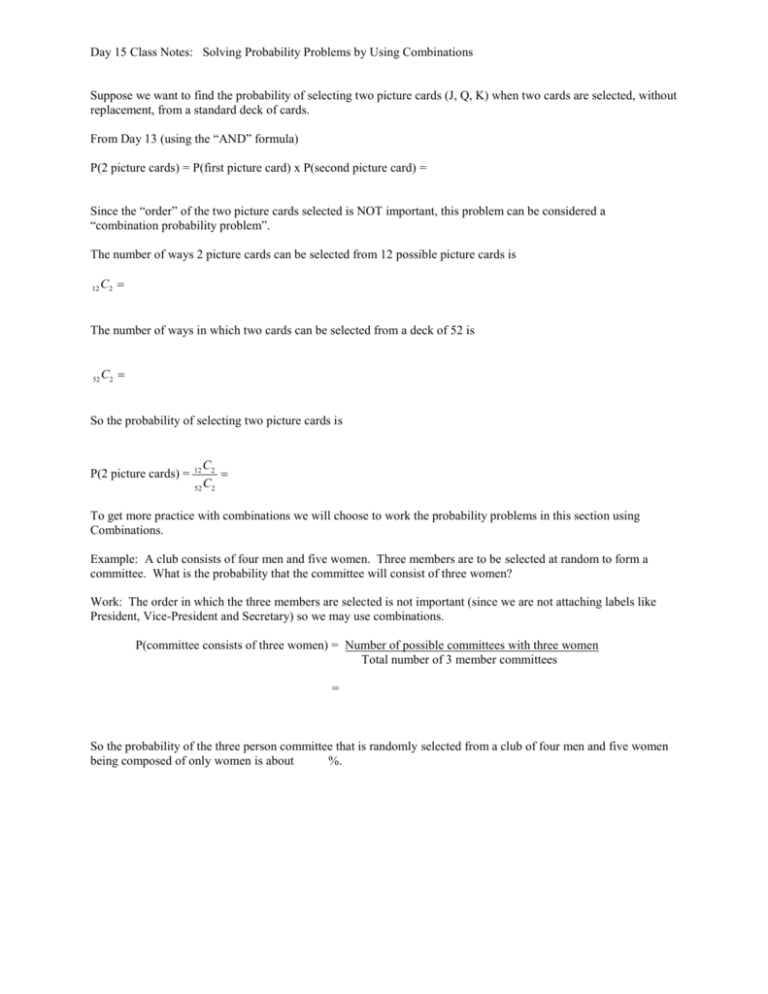
Day 15 Class Notes: Solving Probability Problems by Using Combinations Suppose we want to find the probability of selecting two picture cards (J, Q, K) when two cards are selected, without replacement, from a standard deck of cards. From Day 13 (using the “AND” formula) P(2 picture cards) = P(first picture card) x P(second picture card) = Since the “order” of the two picture cards selected is NOT important, this problem can be considered a “combination probability problem”. The number of ways 2 picture cards can be selected from 12 possible picture cards is 12 C2 The number of ways in which two cards can be selected from a deck of 52 is 52 C2 So the probability of selecting two picture cards is P(2 picture cards) = C2 52 C2 12 To get more practice with combinations we will choose to work the probability problems in this section using Combinations. Example: A club consists of four men and five women. Three members are to be selected at random to form a committee. What is the probability that the committee will consist of three women? Work: The order in which the three members are selected is not important (since we are not attaching labels like President, Vice-President and Secretary) so we may use combinations. P(committee consists of three women) = Number of possible committees with three women Total number of 3 member committees = So the probability of the three person committee that is randomly selected from a club of four men and five women being composed of only women is about %. From our “Poker Work” yesterday (Day 14) Let’s look at the PROBABILITY of being dealt each particular 5 card hand Note: The number of different 5 card poker hands that could be dealt is 52 C5 2,598,960 Hand Number of that type of Hand 1 pair 1,098,240 2 pair 123,552 3 of a kind 54,912 Straight 10,164 Flush 5072 Full House 3744 4 of a kind 624 Straight Flush 32 Royal Straight Flush 4 Probability 1,098, 240 .423 42.3% 2,598,960 123,552 .048 4.8% 2,598,960 54,912 .021 2.1% 2,598,960 10,164 .0039 .39% 2,598,960 5072 .00195 .195% 2,598,960 3744 .00144 .144% 2,598,960 624 .00024 .024% 2,598,960 32 .0000123 .00123% 2,598,960 4 .00000154 .000154% 2,598,960 Question: What is the probability of being dealt a 5 card hand that is NONE of the above hands? Answer: P(none of the hands) = number of 5 card hands that are NONE of those type total number of 5 card hands = or . That is more than of the time you will be dealt a hand that is none of those listed above. Example: Ford is testing 12 new vehicles for possible production. They are testing 3 trucks, 4 minivans and 5 hybrid cars. If we assume that each of the 12 vehicles has the same chance of being selected and 4 new vehicles will be produced, find the probability that….. A) no minivans are selected. P(no mini vans) = C) 2 trucks and 2 hybrid cars are selected P(2 trucks and 2 hybrids) = B) at least one minivan is selected P(at least one minivan selected) = 1 – P(no minivans) =
